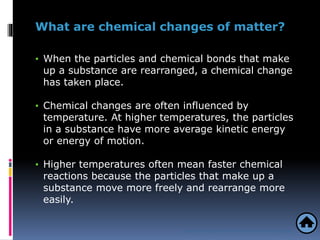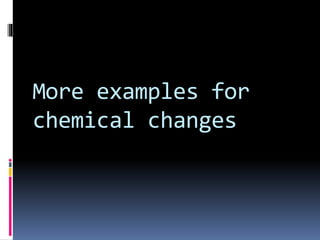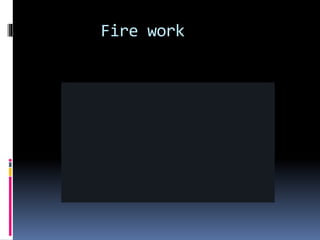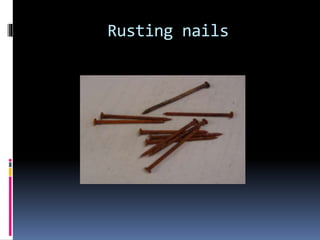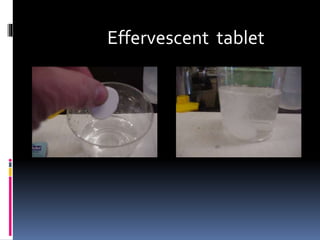Arya pratheesh
- 2. SREEKANDESWARAM POOCHAKKAL B.Ed-2013-2014 KEARALA UNIVERSITY
- 3. Submitted by : Arya p m : PHYSICAL SCIENCE :13383007
- 4. Submitted to: LINI MOL K S FACULTY IN PHYSICAL SCIENCE DEPARTMENT SNTC POOCHAKKAL
- 6. What are physical changes of matter? • A physical change is a change that affects one or more physical properties of a substance. • The appearance, shape, or size of a substance may be altered during a physical change. • Physical changes, such as changes in state(boiling water), dissolving sugar in water, cutting paper, crushing an aluminum can, do not change the chemical identity of a substance. Copyright © Houghton Mifflin Harcourt Publishing Company
- 7. Physical Changes of Matter
- 8. What are chemical changes of matter? • A chemical change is the process by which one or more substances change into entirely new substances. • Chemical changes are not the same as chemical properties. • Burning is a chemical change; flammability is a chemical property. Copyright © Houghton Mifflin Harcourt Publishing Company
- 9. What are chemical changes of matter? • When the particles and chemical bonds that make up a substance are rearranged, a chemical change has taken place. • Chemical changes are often influenced by temperature. At higher temperatures, the particles in a substance have more average kinetic energy or energy of motion. • Higher temperatures often mean faster chemical reactions because the particles that make up a substance move more freely and rearrange more easily. Copyright © Houghton Mifflin Harcourt Publishing Company
- 10. How can you tell a chemical change has happened? • There are several signs that a chemical reaction has occurred. • Observing two or more of these signs during a change means you are likely observing a chemical change. Copyright © Houghton Mifflin Harcourt Publishing Company
- 11. • Odors can be produced during a chemical change. • Fizzing and foaming may mean gases are being produced. • The production of gas is often evidence of a chemical change. • Boiling also can produce gas bubbles, but boiling is a physical change. Copyright © Houghton Mifflin Harcourt Publishing Company
- 12. • A precipitate is a solid that falls out of solution. • The formation of a precipitate can indicate a chemical change. • Energy changes from one form to another can be evidence of a chemical change. • Changes in temperature and color can be signs of a chemical change. Copyright © Houghton Mifflin Harcourt Publishing Company
- 13. Chemical Changes of Matter
- 14. More examples for physical change
- 15. Boiling water
- 16. Removing iron filings from a mixture
- 17. Broken glass
- 18. Salt and water
- 19. Cut paper
- 20. More examples for chemical changes
- 21. Fire work
- 22. Rusting nails
- 23. Vinegar and Baking soda
- 25. Burning wood








